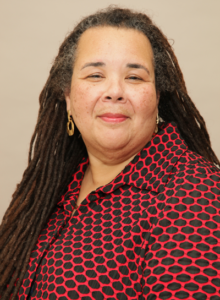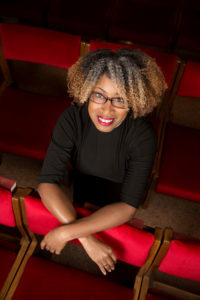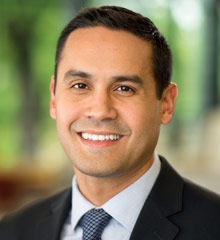teaching with the arts
Select an item by clicking its checkbox
“Learning on the fly,” a phrase used by seminarian Phil Salter, is still on my mind. I am taking a different tact from my previous ponderings …. The inclinations, proclivities and aspirations to fly are abundantly evident in literature – folk, pop, euro-classical, and American Black. Several generations have marveled at the ...
When and where I enter, in the quiet, undisputed dignity of my womanhood, without violence and without suing or special patronage, then and there the whole Negro race enters with me. Anna Julia Cooper Student enters. Looks at me, looks at other students, looks back at me. Is this room 101? ...

Lifelong Learning, The Arts and Community Cultural Engagement In The Contemporary University: International Perspectives
Date Reviewed: August 14, 2015
How might arts-based teaching, learning, and research transform education? This question is explored by demonstrating that arts-based methods and aesthetic pedagogies critically and creatively communicate, teach, make meaning, uncover, and involve students in learning activities. While prevailing attention in the academy is placed on science, math, business, and technology, the collective aim of this volume is to highlight the imaginative practices and creative voices that address the potentials, tensions, and challenges that educators face in working through and within the confines of higher education (7).
The editors, Clover and Sanford, draw on the expertise of educators from North America, Europe, and Africa who work in areas as diverse as religious conflict, civic engagement, teacher education, literacy, theater, museums, dance, and diversity training. The authors demonstrate through varied examples and commonly held convictions that arts-based methods, grounded in social relevance and educational theory, prepare and engage students to develop self understanding and attend to pressing political issues.
The twelve, primarily co-authored, essays are organized into three sections: “Arts-based Teaching and Learning”; “Arts-based Research and Enquiry”; and “Community Cultural Engagement.”
Part One begins with five chapters highlighting examples of arts-based teaching within university settings. Noting the weight placed on traditional assessment and evaluation, the ubiquity of text-based learning, and the stress on technical rationality at the expense of other ways of knowing, the authors convincingly illustrate how the arts provide alternative spaces for learning that can expand student learning rather than diminish it. Skills for engaged citizenship in connection with global and local debates are explored through shared art making, while music is examined as a mobilizing force for activism. Story drama facilitates embodied ways of learning and imaginative writing “turns the gaze” outward to help marginalized student “speak.” Arts-based pedagogies address real problems, help students ground concepts with their own lived experiences, and build communities of learners, while performance-based results synthesize knowledge.
The three chapters in Part Two discuss how arts-based research, which makes use of the arts in the collection, analysis, and dissemination of data, provides researchers with a broader palette of investigative and communication tools with which to garner and relay a range of social meanings (82). For example, theater and drama action-based research is employed by university researchers to assess stress among staff within their work place. Doctoral candidates use collage to tap into extra-rational ways of knowing in order to enhance and clarify their research projects. Dissertation advisors act as midwives supporting the use of arts-based research demonstrating that it is both rigorous and evocative in that its purpose is often to raise consciousness and compel, rather than simply to convince or persuade. At the heart of arts-based inquiry is a radical politically-grounded statement about social justice and control over the production and dissemination of knowledge (81).
Part Three explores community cultural engagement and the arts. Issues related to racism and diversity awareness in Canada, religious conflict in Northern Ireland, and lifelong learning and cultural engagement in a museum in Scotland are examined through arts-based methods. In these varied examples boundaries between academy and community, practitioners and experts, access and privilege, are diffused. Instead, the authors point to the benefits of working beyond disciplinary silos in order to dismantle elitism, classicism, and notions of art for art’s sake.
This book is written for all who would like to work beyond normative structures of higher education by using creative arts-based methodologies and practices. It is for those who wish to collaborate with community artists and cultural institutions and for those who seek ways to unite affective and cognitive learning by engagement with and through the arts. As the editors assert, the arts have potential for augmenting the human aesthetic dimension, rupturing categories of how the world is seen, and imagining the world as it might be.

Engaging Imagination: Helping Students Become Creative and Reflective Thinkers
Date Reviewed: March 26, 2015
Engaging Imagination: Helping Students Become Creative and Reflective Thinkers poses a challenge to educators across fields to reach beyond traditional teaching and learning methods. Authors Alison James and Stephen D. Brookfield ask, “Why are we not open to varied expressive modes – video, art, drama, poetry, music – to gauge students’ learning? If there are multiple intelligences (Gardner, Frames of Mind: The Theory of Multiple Intelligences [New York, NY: Basic Books, 2011]), if students’ diverse histories, cultural backgrounds, racial identities, and personalities mean teaching and learning is inevitably complex (Allen, Sheve, and Nieter, Understanding Learning Styles: Making a Difference for Diverse Learners [Huntington Beach, CA: Shell Education 2010]) then shouldn’t our approaches to helping and assessing learning exhibit a similar variety” (4)? The book invites us to imagine “what if” (xii) students were given opportunities to explore their learning beyond lectures, discussions, reading, and writing. The authors do not intend to solve the institutional or assessment challenges of teaching more creatively, but to pose ideas for reflection and exploration. Each chapter provides websites to further engage concepts and activities described in the book.
Part I, “Understanding the Role of Imagination in Learning,” argues in three chapters that students learn more effectively when they are given freedom to reflect. This is an engaged reflection, involving: creativity – where students are given ways to “unravel . . . question . . . ponder . . . clarify . . . demonstrate” (57); imagination – which focuses on possibilities; and play – learning engaged from new angles, leading to spontaneous insights.
Part II, “Engaging Imagination Tools and Techniques,” forms the heart of the book and may prove to be a valuable resource to liven up syllabi and classrooms. In each of six chapters, a different way of teaching and learning is presented; two to eight activities are also described in detail, providing practical illustrations. Just one activity from each way of teaching and learning is included here. (1) Visual learning: Students create collages in response to a discussion question. (2) Story and metaphor: Students symbolize key learning experiences on a timeline. (3) Kinesthetic learning: Students use Legos or other concrete objects to construct models of their thinking-in-process. (4) Attending to physical space: A special space in the classroom (or an inflatable “pod”) can serve as a place where students, alone or in small groups, can video their live reflections. (5) Asking non-leading questions: Students are guided to think more deeply about their own beliefs by questions that ask for analogies, opposites, or ways of recognizing certain qualities. (6) Community impact on learning: Students map the various communities in their spheres of life to observe how each shapes their perspectives.
Part III, “Negotiating the Realities of Engaging Imagination,” provides activities for students to navigate energy levels and emotions while learning. In a final chapter authors share how their own imaginations were engaged through the writing process.
Engaging Imagination is not aimed so much at educators helping students to think creatively and reflectively about course content, but rather at presenting ways educators may help students to reflect on themselves as learners. Thus the subtitle can be misleading. However, most of the learning activities could be adapted for deepening student understanding of course content. The emphasis on student self-awareness contributes to the current pedagogical shift from teaching to impart information towards facilitating and empowering student-directed learning in a variety of classroom and online settings. Little is offered by way of guiding students towards a directed end; indeed doing so would negate the purpose of many of the activities. It is therefore significant that authors acknowledge their work as a complement to, rather than replacement of, traditional forms of teaching and learning. We are left with the same challenge students will have as a result of “engaging imagination”: to appropriate the insights gained.
I teach texts. I read texts. I write texts. Every once in a great while, I even text texts. But I’ve noticed recently that many more of the texts I receive have fewer and fewer actual words. I’m talking acronyms certainly (LOL and lots more I haven’t ...


